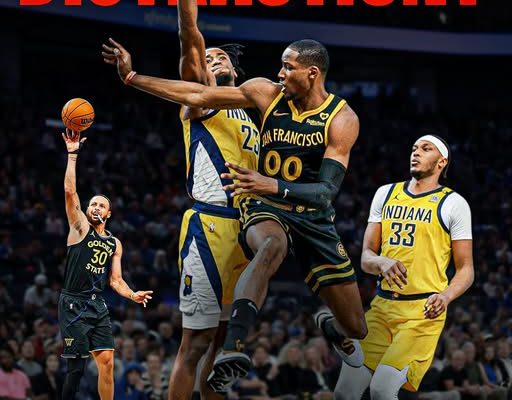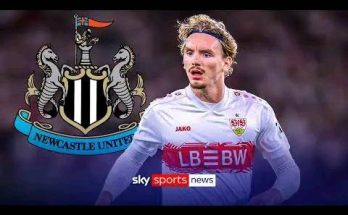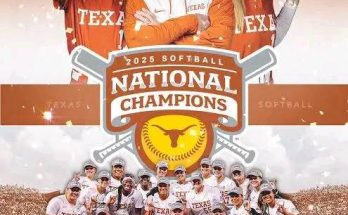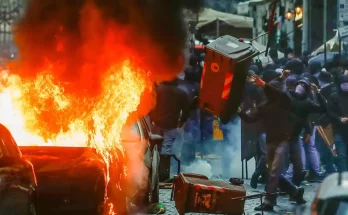The Golden State Warriors are no strangers to drama. From the Kevin Durant years to Draymond Green’s podcast revelations, the franchise has seen its share of controversies and internal tensions. But in the aftermath of their dynastic run and with the roster aging, every distraction carries more weight—more consequence. That’s what makes the situation with Jonathan Kuminga so precarious. His contract dispute and the broader implications of his relationship with the front office could very well determine the trajectory of the franchise in the 2025–26 season and possibly beyond. It isn’t just a matter of retaining a talented young forward. It’s about whether the Warriors can preserve a culture that once turned overlooked draft picks into champions and veterans into legends. And if Evan Giddings’ assessment on Willard and Dibs is accurate—that Kuminga’s very presence might derail the season—it puts a magnifying glass over the team’s locker room dynamics, leadership structure, and long-term strategic direction.
Jonathan Kuminga is not a typical young player. Taken seventh overall in the 2021 NBA Draft, he was heralded for his raw athleticism, two-way potential, and his unique physical profile—a 6’7″ wing with a 7’0″ wingspan and explosive verticality. He was supposed to be the next evolution in the Warriors’ roster—a bridge between the past and the future. A developmental project who could eventually slot into the power vacuum left by the aging core of Stephen Curry, Klay Thompson, and Draymond Green. And in flashes, he’s delivered. There have been stretches where Kuminga has looked like the best athlete on the floor, even in games filled with All-Stars. His ability to defend multiple positions, run the floor, and finish at the rim has made him an essential piece in specific matchups. But flashes aren’t consistency. And development doesn’t always follow a straight line.
The issue now isn’t just Kuminga’s potential—it’s what the franchise is doing with it. The Warriors haven’t committed to a clear long-term plan for him. They’ve yo-yoed his minutes, brought in veterans that complicate his role, and despite his growth last season, still haven’t given him the level of organizational buy-in that suggests they view him as a franchise cornerstone. The result? Frustration on both sides. Kuminga, entering a critical contract window, wants clarity. He wants to be valued not just as a tool in Steve Kerr’s matchup-based chessboard but as a player with a future in the organization. And the front office, ever-straddling the win-now versus build-later dilemma, seems paralyzed by indecision.
That indecision is the root of the current conflict. By not extending Kuminga early, by allowing his contract situation to fester into the summer, the Warriors have allowed speculation, rumor, and resentment to grow. Teammates are reportedly aware of the tension. Some veteran players, sources say, support Kuminga’s case—recognizing that his ceiling might be higher than anyone else’s on the roster not named Stephen Curry. Others reportedly feel that Kuminga’s attitude and approach have, at times, clashed with the selfless, motion-offense-driven ethos that made Golden State champions. It’s a classic generational divide. The veterans want to win now and maintain the culture they built. Kuminga, and other young players like Moses Moody, want opportunity and growth. When those goals align, the result can be beautiful basketball. But when they clash, the locker room can become a minefield.
Steve Kerr is central to how this plays out. Known for his calm demeanor and ability to manage egos, Kerr has generally done a good job balancing personalities. But the last two years have tested his philosophy. The Jordan Poole drama, which began with a punch and ended in a trade, exposed cracks in the “strength in numbers” mantra. That situation taught everyone a hard lesson: unresolved tension, even among talented teammates, can become toxic. If Kerr and the Warriors brass aren’t proactive with Kuminga, they risk a similar scenario—except this time, it’s not about trading a player with marginal All-Star potential. It’s about keeping a guy who could define the next era of the franchise.
Kuminga isn’t just upset about minutes or money. He wants to be a foundational piece. That requires more than lip service from the front office. It means a real vision. Not just talk about development, but actual game plans that give him responsibility on both ends of the floor. When he gets touches, when he’s allowed to initiate offense, when he’s trusted to guard elite wings without being yanked for a single mistake—he produces. The numbers back it up. In games where Kuminga played 25 or more minutes last season, he averaged 18.4 points, 6.2 rebounds, and shot over 52% from the field. Those aren’t the numbers of a role player. They’re the numbers of a rising star.
So why the hesitation from the Warriors? Part of it comes down to system. Steve Kerr’s offense is notoriously complex, predicated on off-ball movement, split actions, and intuitive decision-making. It takes years to master, and Kuminga, who came into the league as a raw athlete, still occasionally struggles with its intricacies. But perhaps the system needs to evolve, too. The league is getting faster, more athletic, more isolation-heavy. Can the Warriors adapt, or will they cling to a philosophy that maximized Steph and Klay but might not suit the next generation?
The larger problem may be philosophical. Golden State has tried to walk a nearly impossible tightrope the past few years—contending for titles while developing unproven prospects. It’s hard to serve two masters. They’ve already burned draft capital on players who couldn’t crack the rotation. James Wiseman, the number two pick in 2020, is now gone. Patrick Baldwin Jr. was shipped out before he could develop. The “two-timeline” strategy has mostly failed. Now, they’re at a crossroads. With Curry in his late 30s and still performing at an All-NBA level, do they double down on one last run with the veterans? Or do they finally start reshaping the team around Kuminga, Brandin Podziemski, and Trayce Jackson-Davis?
Evan Giddings’ warning on Willard and Dibs—that Kuminga could derail the season—may sound dramatic, but it’s not unfounded. Distraction doesn’t always come from media blow-ups or sideline shouting matches. Sometimes it’s the quiet tension that saps morale, the unspoken conflict that makes practices awkward, the side-eyes in the film room that never get addressed. If Kuminga enters the season feeling undervalued, his effort might fluctuate. If teammates sense the front office isn’t being transparent, the “we’re all in this together” feeling starts to fade. And once trust is broken, it’s hard to repair midseason.
There’s also the trade possibility, which looms large. Teams across the league are watching the Kuminga situation closely. The Warriors could trade him for immediate help—a floor-spacing big, a veteran wing, or another shot-creator. But doing so would be a white flag on the youth movement and a clear sign they’re going all-in on Curry’s final window. And that might not even be enough. The Western Conference is loaded. Denver still has Jokic. Minnesota, OKC, and Dallas are ascending. Even with a big trade, there’s no guarantee the Warriors leap back into the top tier.
If they do move Kuminga, they better be right. Because if he becomes a star elsewhere—say, in Houston or Indiana or Brooklyn—it’ll be yet another indictment of how Golden State’s once-flawless development pipeline has dried up. The optics alone would be brutal. A franchise that once drafted, developed, and molded stars in-house suddenly can’t seem to manage its young talent. And that has implications far beyond this season. It affects how agents steer clients in the draft. It affects free agency. It affects how Stephen Curry himself views the front office.
And speaking of Curry, his voice matters more than anyone’s. If he backs Kuminga behind the scenes, it changes the power dynamics. If he sides with the vets and signals that he doesn’t have time for “projects,” that’s a message, too. Everything revolves around Curry. But even he can’t carry this team alone anymore. He needs help. The question is whether the Warriors will recognize that the best help might already be on the roster—waiting, hungry, and just needing some trust.
What happens next with Jonathan Kuminga will reveal a lot about where this franchise truly stands. Are they still the cutting-edge, self-aware powerhouse that built a dynasty on collaboration and vision? Or are they just another aging contender clinging to past glory, afraid to commit to the uncertainty of youth? The season hasn’t even started, but in many ways, the stakes are already enormous. One player, one decision, one approach to a contract standoff could tilt the balance between revival and regression. If the Warriors want to stay relevant, they’ll need to figure out who Jonathan Kuminga really is—and fast. Because the clock on the dynasty isn’t just ticking. It might already be in overtime.



